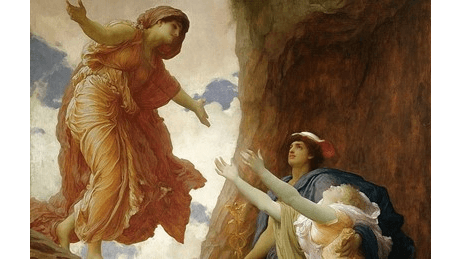The arrival of spring, especially after a hard winter, makes us all happy and hopeful for new life. The ancients believed that the gods were in charge of everything on earth and explained how they gave us the seasons. The Greeks explained the coming of spring and the changing seasons with the myth of Demeter, the goddess of nature, and her daughter, Persephone.
Hades, who was god of the underworld, had taken Persephone to his realm to be his wife. Demeter mourned the loss of her daughter and so did the once-green earth. Nothing grew. The earth was dying without Persephone’s joyful laughter. Zeus had to resolve this.






